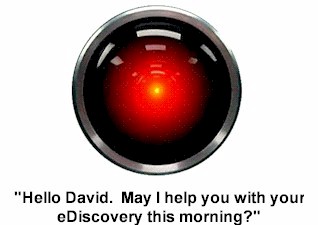- You are here:
- Home »
- Electronic Discovery »
- Computer aided document review has arrived
Computer aided document review has arrived

The January issue of the Journal of the American Society for Information Science and Technology has an article by Herb Roitblat, Anne Kershaw, and Patrick Oot describing a study that compared computer classification of e-discovery documents with manual review. It found that computer classification was at least as consistent as human review was at distinguishing responsive from nonresponsive documents.
Anne Kershaw discussed many of these issues at the Georgetown University Advanced E-Discovery Institute last year (click here) and Patrick Oot presented some preliminary findings from the aticle at the IQPC eDiscovery Conference in December. We hope to interview them at LegalTech (click here).
The documents used in the study were collected in response to a “Second Request” concerning Verizon’s acquisition of MCI. The documents were collected from 83 employees in 10 US states. Together they consisted of 1.3 terabytes of electronic files in the form of 2,319,346 documents.
For an overview of the study click here. For a full copy of the study click here .
Charles Skamser, author of the blog The eDiscovery Paradigm, has blogged over the past several months about the emergence of “Hal 900 like” experiences in e-discovery and Web 3.0. In his blog post on the study he states “one system agreed with the original classification on 83.2% of the documents and the other on 83.6%. Like the human review teams, about half of the documents identified as responsive by the original review were similarly classified by the computer systems”. For his full post and links to his other analysis of the utilization of semantic and related technology to reduce the cost of document review through computer aided document categorization click here.
The problem for document review contract attorneys is that the results imply that using a computer-based classification system is a viable way to produce a reasonable categorization. This development, coupled with similar work being done by Google and Microsoft, could mean that the task of document review, as echoed by Charles Skamser, “could indeed be in the process of evolving to the next level of computer aided automation”.
